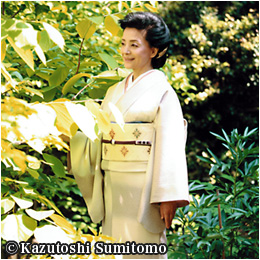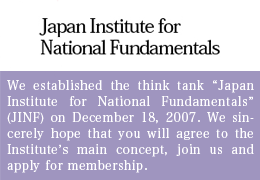Japan’s Nuclear Policy at Crossroads
Former Prime Minister Naoto Kan of the Democratic Party of Japan (DPJ) took office in June 2010 with an uninspiring pledge to build a society with a “minimum level of unhappiness.” He soon faced a disgruntled public totally disillusioned with the ineffectual measures his administration took to cope with the nuclear disaster brought on by the colossal earthquake and subsequent tsunami that hit Japan’s Pacific Northeast in March 2011.
Kan’s DPJ was thrown out of office last December, but the negative effects of his nuclear policy live on. The very foundation of Japan’s nuclear future has been undermined, as a path to the decommissioning of all of the 52 existing nuclear reactors across the nation remains in place exactly as Kan envisioned.
On April 30, asked by a Hokkaido Shimbun reporter about the likelihood of any of the nation’s nuclear power stations being reopend, Kan replied that the DPJ had left behind a framework which “does not allow a smooth and steady reopening of the idled plants,” identifying a key mechanism of that framework as the powerful Nuclear Regulatory Authority (NRA). If what Kan said is true, the NRA must then be recognized as Kan and his cohorts’ parting effort to decommission all nuclear reactors in Japan.
On May 22, the NRA formally approved a report submitted by a council of experts defining as active a fault line running underneath the no. 2 reactor at the Tsuruga Nuclear Power Plant in Fukui Prefecture. NRA Chairman Shunichi Tanaka in effect made clear his belief that reopening the Tsuruga plant will be impossible because the active fault line puts the reactor in violation of the government’s safety standards. In other words, this finding means it is not necessary to conduct safety inspections to determine whether or not the plant can be activated; in Chairman Tanaka’s opinion, it unquestionably can not.
However, this conclusion has proved highly controversial, attracting much criticism and many refutations. There have even been reports of voices from within the authority itself that question the legitimacy of the report’s make-up, asking whether the data taken up by the authority may not be biased.
Professor Koji Okumura of Hiroshima University is one of the experts who has raised an objection to the NRA’s conclusion. As a member of the now defunct Nuclear Safety Commission (NSC), Prof. Okumura had conducted earthquake safety inspections for a decade until September 2012, when the NSC was replaced by the NRA. He concurrently served as a Science Committee member of the International Atomic Energy Agency, headquartered in Vienna, Austria. Explains Prof. Okumura:
“The logic of the new regulatory body boils down to the following: ‘If a fault line found under a nuclear power station turns out to be active, what you are going to do if an earthquake occurs and the facility collapses? There are many things in our field that cannot be verified scientifically, but because we are concerned about safety, let us assume a conservative approach and regard as dangerous all of the things whose safety we cannot verify.’
“That is the NRA’s position, but what we don’t know we should declare we don’t know, and regulations – judgments about right or wrong – should only be made upon those things we do have a reasonable degree of knowledge about. Unless this basic principle of research and study is pursued rigidly, it cannot be said that a scientific approach has been taken. Nevertheless, the NRA dares render judgment on cases which could not be verified.”
Decision to Exclude Nuclear Experts
Frequent references to an existence of active fault lines in the area of nuclear power stations appear to me to be a reflection of the NRA’s arbitrary eagerness to prevent nuclear power plants from ever being reopened in Japan. What is referred to as “an active fault line,” I suppose, has been active off and on over the past hundreds of thousands of years, and expected to become active again sometime in the future. I would think that, only when enough surveys at depth are conducted, will we be able to know in what fashion a particular active fault line has shifted and what is its real status.
And yet I do not believe it possible to precisely predict the future behavior of fault lines, even if their past patterns of activity is precisely mapped out based on meticulous and painstaking geological and topographical surveys.
That is why it is vitally important to determine whether or not the fault line running underneath reactor no. 2 at the Tsuruga Nuclear Power Plant is active.
Tsuruga’s reactor no. 2 was commissioned on February 17, 1987. Prof. Okumura points out that the reactor was installed after Japan started to attach great importance to a survey of active fault lines in planned nuclear power plant sites in the 1970s, and the government had scientific reasons to verify that the fault line in question was not active. But the new nuclear regulatory body has concluded to the contrary.
Now, who among the five commission members – Chairman Tanaka, Kunihiko Shimazaki, Toyoshi Fuketa, Kayoko Nakamura, or Kenzo Oshima – finally decided that this fault line was active? The NRA is independent of the government, equipped with strong power as an “Article 3” entity (formed under Article 3 of the National Government Organization Act). Equally significant are the responsibilities thrust on the members’ shoulders.
However, in fulfilling his responsibilities, Chairman Tanaka refused to render his own judgment and passed the buck to Shimazaki, who turned heavily to a few experts – primarily Emeritus Professor Takahiro Nakata of Hiroshima University and Professors Mitsuhisa Watanabe of Toyo University and Yasuhiro Suzuki of Nagoya University – for their counsel. It is under such an arrangement favoring the judgment of these “experts” that decisions are being made.
“Among the experts making up safety standards for nuclear power plants, the one academician playing an important role on active fault lines is Professor Yasuhiro Suzuki,” explains Prof. Okumura. “I believe it is correct to surmise that the other scholars are in effect excluded when the NRA renders any conclusion pertaining to active fault lines.”
I believe a little explanation is due at this juncture. Determining safety standards for nuclear power generation in Japan is akin to formulating the fundamentals of our overall national energy strategy. The government decided to organize a council of intellectuals and nuclear experts, sending a formal request to major scientific societies asking for recommendations for appropriate council members. The request was e-mailed last September 28, with a deadline set for October 5. As it turned out, recommendations were made within just a week. At the time, however, many of the nuclear experts who had previously been involved in safety inspections of plants were eliminated.
Logically speaking, it would be virtually impossible to select truly qualified individuals by excluding seasoned experts, as was already pointed out at the outset. As a result, there are people today that criticize council members as “second team players” who fundamentally lack expertise on fault lines but are determined to recommend that all nuclear power stations in Japan be decommissioned for safety reasons. In point of fact, a council member misidentified as an active fault line a long stretch of discarded concrete blocks following a survey pertaining to epicentric quakes in the metropolitan area earlier this year. The survey was conducted at the Tachikawa fault in central Japan – a 21-kilometer fault that runs from Ome to Tachikawa and Fuchu in Tokyo. He was later quoted as admitting: “I’m afraid I ‘saw’ what I was hoping to see.” And the truth of the matter is that it is these individuals who are currently engaging in scientific surveys at nuclear power stations, entrusted with the task of determining whether or not a fault line found there is active.
Charging Ahead Towards Decommissioning Nuclear Reactors
Prof. Okumura raised this question:
“In the case of the Tsuruga plant, although experts on active fault lines conduct on-site inspection, the truth of the matter is that they were dealing with fractured strata, rather than an active fault line. There was a serious mismatch between the experts and the object of their inspection, with fault line experts inspecting fractured strata. The problem with the experts’ council, as well as the NRA, which is the umbrella organization of the council, is that they never heed the opinions of the experts who take a stand against their viewpoint.
“In addition, the proprietors of utilities are totally ignored. An even worse problem is that they jump to conclusions much too irrationally. In point of fact, the five “experts” spent only a day and a half on their on-site inspection at Tsuruga. And they subsequently met only a few times to discuss their findings. A pertinent assessment of the fault lines in question has seriously been hampered by these ‘experts’ of the commission, who dealt with targets of inspection not matching their expertise, blatantly excluded different opinions during deliberations, and made impetuous decisions that disregarded the scientific data.”
We all share the same strong desire for safety in nuclear power generation. For that purpose, the NRA is urged to render scientifically sound and stringent judgments under all circumstances. Above all else, it is unscientific and unacceptable for the regulatory body to arbitrarily exclude vital information in making the ultimate decision as to whether a fault line is actually active. Such an arbitrary approach, making one suspect the NRA may be pushing for a decommissioning of all of the nuclear power plants across Japan, should be strictly admonished.
In this regard, Japan should emulate the “German experience,” points out Prof. Narabayashi, explaining:
“In its zeal to advocate a solid anti-nuclear policy, Germany’s nuclear regulatory body KTA (the Nuclear Safety Standards Commission) dared eliminate from its staff all personnel from the so-called ‘nuclear village’ – the closely-knit community of legislators, regulators, and manufacturers involved in nuclear power promotion. However, after observing the failed measures taken against the Fukushima disaster, reflecting what can rightly be termed as an almost total lack of pertinent plans on the part of the Japanese government, the KTA realized that they will not be able to cope satisfactorily with Germany’s nuclear problems without being able to turn to experts. As a result, it is now capable of making fair judgments after formally inviting four experts from Germany’s nuclear power industry to join the commission.”
It is vital that the administration of Prime Minister Shinzo Abe reshuffle the make-up of the NRA’s leadership so as to improve the hitherto unenlightened method of its deliberations. We need this in order to ensure the fair and scientific search for the safety of our nuclear power generation that all of us crave.
(Translated from “Renaissance Japan” column no. 565 in the July 11, 2013 issue of The Weekly Shincho)









Calzoncillo Calvin Klein…
Japan’s Nuclear Policy at Crossroads | Yoshiko Sakurai -official web site-…
Trackback by Calzoncillo Calvin Klein — 2014年03月26日 15:34